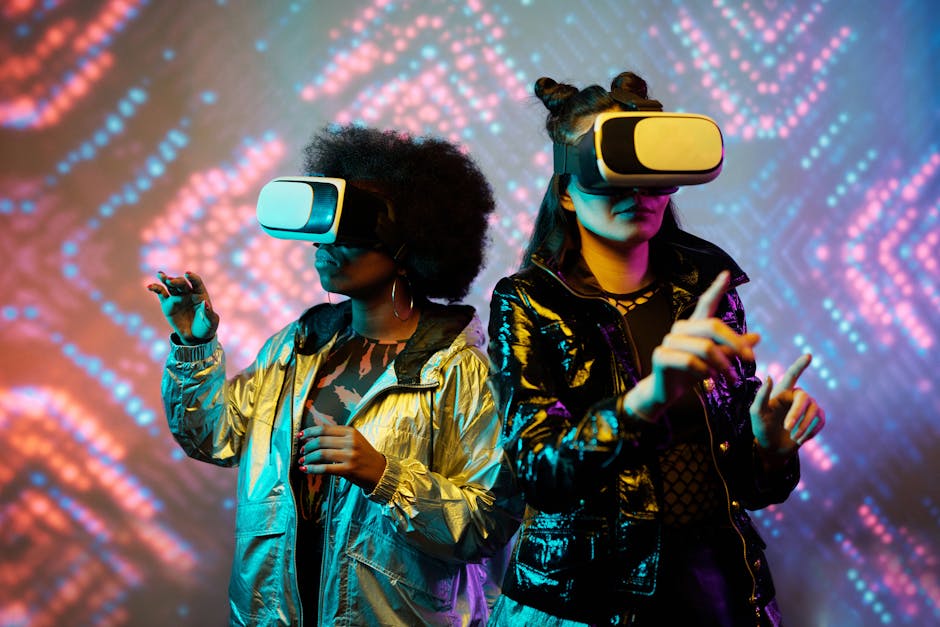Intersection of Feminism and Digital Art
Digital feminism finds unique expression within the digital art scene, blending art, activism, and empowerment. Women artists use technology to craft art and reshape societal perspectives. This digital canvas becomes a platform where women's voices project loudly and vividly.
The story of digital art intertwines with the feminist movement, challenging how and by whom art is made. Legacy Russell's "glitch feminism" critiques binary systems favoring patriarchal structures, aligning with the innovative spirit of women pioneering NFTs and other forms of digital art.
Video gaming and anime have seen significant female contributions, with women influencing these genres by portraying heroines who embody strength, complexity, and diversity.
Platforms like Instagram have given rise to the female gaze, highlighting women's perspectives and experiences. Artists like Rinny Perkins use visual arts to disrupt and redefine female representation, challenging stereotypes perpetuated by mainstream media.
Self-publishing and social media platforms provide women artists autonomy over their work, enabling direct audience engagement. This digital stage allows them to bypass traditional gatekeepers, echoing the Riot Grrrl's DIY ethos.
As digital art gains traction, it challenges the traditional fine art hierarchy, opening dialogues on what qualifies as 'serious' art. Digital technology democratizes access, stirring the art world to reconsider its long-held prejudices.
The journey of digital feminism in art is characterized by a continual intertwining of technology, culture, and social justice. It's a reminder that as art evolves, it refines how society sees women and how women see themselves.
Role of Women in NFTs
The NFT market offers a compelling landscape for examining women's contributions in this burgeoning field. Women artists have been at the forefront of this digital frontier, infusing the virtual space with their unique insights and innovative perspectives.
Artists like Krista Kim and Sarah Zucker are leveraging blockchain technology to break through traditional barriers. Kim's work interrogates the relationship between technology and humanity, while Zucker's blend of GIFs and tech-savvy projects meld humor with thought-provoking content.
Despite these advances, challenges persist. The NFT space still suffers from issues of equity and inclusion, often replicating systemic biases. Many women in NFTs face obstacles ranging from lack of recognition to gender bias.
Nonetheless, this digital epoch offers a platform for championing diversity. The decentralized nature of NFTs provides an opportunity for women to assert independence and align their artistic endeavors with broader social causes.
As more women enter this space, they bring a host of stories that enrich the digital art scene. This ongoing evolution in NFTs emphasizes artistic innovation and the pursuit of equality and representation.
Cyberfeminism and Digital Identity
Cyberfeminism emerges as a dynamic intersection of gender and technology, reshaping how we perceive identity in the digital age. Glitch feminism, as articulated by Legacy Russell, challenges entrenched binaries and advocates for non-binary identities in digital spaces.
Digital spaces offer fertile ground for identity exploration. Women and non-binary individuals are using digital platforms to craft new, fluid identities that defy neat categorization. The concept of 'glitch' becomes synonymous with resistance, representing the disruption of patriarchal codes that often dictate gender expression and roles.
Virtual avatars in social media and gaming serve as extensions of self, allowing users to explore aspects of identity not always accessible in the physical world. Through conscious design and interaction, digital personas can become vessels for autonomy and personal expression.
Cyberfeminism amplifies inclusivity, creating sanctuaries for voices historically marginalized by mainstream culture. Non-binary and gender-diverse communities find in these digital corridors a chance to voice their realities, pushing back against a cyber landscape often skewed toward heteronormative paradigms.
Despite its promises, the journey through the digital is not without hurdles. The same cyberspaces that offer liberation can also play host to forms of surveillance and repression. Yet, the resilience and creativity inherent in cyberfeminism provide counter perspectives, framing these spaces as arenas for activism and redefinition.
Cyberfeminism challenges us to question, adapt, and envision paths forward where the digital realm is an integral part of our ongoing dialogue about identity. With every 'glitch,' a new possibility is born, urging us to embrace the fluidity and complexity of identity in all its digital forms.

Feminist Influence on Popular Digital Culture
In popular digital culture, feminist digital artists have redefined video gaming and anime, challenging the entrenched male-dominated stories that have long governed these industries. Women developers are crafting stories and characters that break away from tired tropes, offering players multi-dimensional characters who embody resilience and intelligence.
Creators like Anna Anthropy and Mattie Brice infuse feminist perspectives into game design, challenging players to engage with themes such as identity and social justice. These stories bring marginalized voices to the forefront, creating a digital space where users can explore and affirm diverse identities.
In anime, women have exerted considerable influence by pushing back against conventional, often gender-biased storylines. Female creators are reimagining stories to feature heroines who subvert traditional roles, presenting tales that resonate with the complexities of real-world gender dynamics.
The series Sailor Moon, for example, flips the script on traditional superhero stories, featuring young women who battle villains and societal norms alike. Such works offer audiences an opportunity to see themselves reflected in powerful, relatable characters.
This progressive wave extends beyond stories to impact visual representation itself. Female artists are dismantling aesthetic conventions that have long objectified female characters, forging new paths in character design that reflect authentic female experiences and aspirations.
Feminist influence in digital culture also encompasses collaborative indies and grassroots communities that form around these creative works. Such platforms offer burgeoning artists a space to develop new ideas, free from the constraints of mainstream production cycles.
As this influence continues to spread, it challenges both consumers and creators to reconsider their roles and contributions. The work of feminist digital artists proves crucial in creating new worlds where every voice has a place and a purpose.

Self-Representation and the Female Gaze
In digital art, the female gaze emerges as a powerful force, redefining how women see themselves and are seen. This shift towards self-representation is particularly vibrant on social media platforms, where artists craft stories that reflect the intricacies of contemporary femininity.
Women are reclaiming their image through self-representation, using digital artforms like photography, digital painting, and CGI to depict their own stories. Artists like Laetitia Ky and Rinny Perkins open a dialogue about identity that is refreshing and deeply personal.
The selfie, once trivialized, becomes a potent tool of empowerment, asserting control over one's image. Platforms like Instagram have fostered environments where this new wave of representation thrives, allowing women artists to explore and broadcast a rich weave of existence not solely confined to beauty or societal expectations.
Digital artists often incorporate elements of the feminine aesthetic into their work without shying away from themes traditionally dismissed as superficial. Instead, such themes are leveraged to critique, celebrate, and sometimes subvert existing stereotypes concerning femininity and beauty.
This confluence of self-representation and the female gaze challenges conventional understandings of beauty by highlighting diverse facets of identity. By showcasing non-linear stories and embracing imperfections, these digital artists construct multi-faceted portrayals that mirror the realities and aspirations of many women today.
As the boundary between creator and audience continues to dissolve, the female gaze becomes increasingly participatory. It's not just about how women are depicted, but about who gets to create, share, and engage with these portrayals.
Self-representation in digital art, empowered by the female gaze, catalyzes a reorientation in how society perceives women. It's a powerful assertion that women, armed with digital tools and social platforms, can redefine perspectives on their terms, inviting us all to view femininity through a lens of authenticity and personal truth.
As digital art continues to evolve, it reshapes how society perceives women and their roles. This transformation is not just about visibility but about redefining perspectives on women's terms, inviting a more inclusive future where every voice is heard and celebrated.
- Jansen C. Girl on Girl: Art and Photography in the Age of the Female Gaze. Laurence King Publishing; 2017.
- Berger J. Ways of Seeing. Penguin; 1972.
- MacDonald S, Wiens B, Kadir A. Feminist Relationality in Practice: Pedagogies of Critical Friendship and Careful Support. Digital Studies/Le Champ Numérique. 2023.
- MacDonald S, Wiens B. Meme-ifying Data: The Rise of Public Health Influencers on Instagram, TikTok, and Twitter during Covid-19. Journal of Digital Social Research. 2023.
























